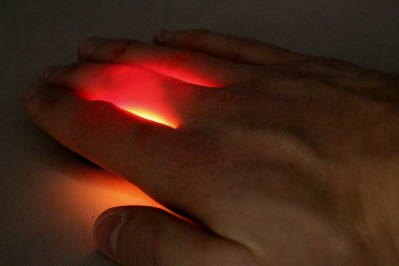Shining Light on the Newborn Brain
Visible light travelling through the body is strongly absorbed by the oxygen-carrying molecule, haemoglobin. Red and near-infrared light (which is just beyond the visible) is also absorbed by haemoglobin, but is able to travel several centimetres through biological tissue, and the amount of light absorbed will depend on the amount of oxygen being carried. These two properties – the relative transparency of near infrared light, and oxygen-dependent absorption – can be used to provide information on the amount of oxygen in tissues, and in particular the brain.

Using a single light source and detector, information on oxygen levels across the whole brain can be obtained; using several light sources it is possible to reconstruct images of regional blood flow and oxygenation.
The main research themes of the neoLAB group include:
- Early identification of infants at risk of brain injury
- Translating best research into clinical practice
The team are involved in a number of studies using light based technologies to monitor and image the developing brain:
- Wearable neuroimaging for the study of infant movement (ANIMATE)
- Study of Autoregulation Monitoring in Babies (SAMBA)
- Investigation of Neurovascular Coupling (Optical-EEG)
- Baseline Resting-state Activity In Newborns (BRAIN)
- Fast Optical Tomography On Neonates (FOTON)
neoLAB also have collaborative projects with research groups looking at the developing brain:


